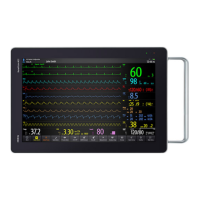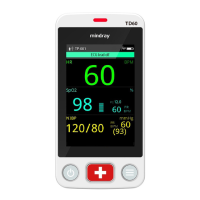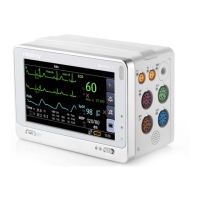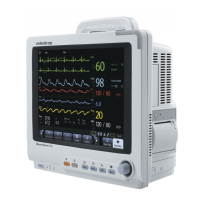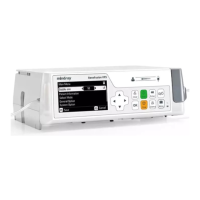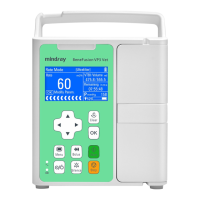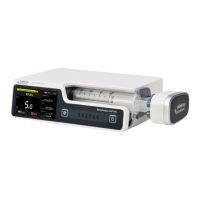6 - 10 BeneVision N1 Patient Monitor Operator’s Manual
The monitor can be set to separately latch visual indications or simultaneously latch the visual and the audible
indications.
■ When visual indications are latched, visual indications, including alarm lamp, alarm message and its
background remains when the alarm condition ends and the time when the alarm last triggered is
displayed behind the alarm message.
■ When audible indications are latched, the monitor continues to issues alarm sounds when the alarm
condition ends.
To set how you want to latch the physiological alarms, see section 21.3.4Latching Physiological Alarms.
• Changing alarm priority may affect the latching status of the corresponding alarm. Determine if you
need to adjust the latching status for the specific alarm when you have changed its alarm priority.
• When the alarm system is reset, latched physiological alarms are cleared.
6.10 CPB Mode
The CPB (Cardiopulmonary Bypass) mode is activated only if you set the department to OR.
In the CPB mode, all the physiological alarms and technical alarms are switched off. So when performing CPB,
you can put the monitor in the CPB mode to inactivate unnecessary alarms.
6.10.1 Entering the CPB Mode
To enter the CPB mode, select the Main Menu quick key → from the Alarm column select CPB Mode.
In the CPB mode, CPB Mode is displayed in the physiological alarm area with a red background color.
• When the CPB mode is entered, the monitor stops all NIBP measurements. You can restart NIBP
measurements after entering the CPB mode.
6.10.2 Exiting the CPB Mode
To exit the CPB mode, select the Main Menu quick key → from the Alarm column select Exit CPB Mode.
6.11 Intubation Mode
Intubation mode is available for Resp and CO
2
monitoring. When performing intubation during general
anesthesia, you can put the monitor in the intubation mode in order to inactivate unnecessary alarms.
In the intubation mode, Resp and CO
2
related physiological alarms are switched off.
6.11.1 Entering the Intubation Mode
To enter the intubation mode, choose either of the following ways:
■ From the bottom of the Resp or CO2 dialog, select Intubation Mode.
■ Select the Main Menu quick key → from the Alarm column select Intubation Mode.
6.11.2 Exiting the Intubation Mode
To exit the intubation mode, choose either of the following ways:
■ From the bottom of the Resp or CO2 dialog, select Exit Intubation Mode.
■ Select the Main Menu quick key from the Alarm column → select Exit Intubation Mode.

